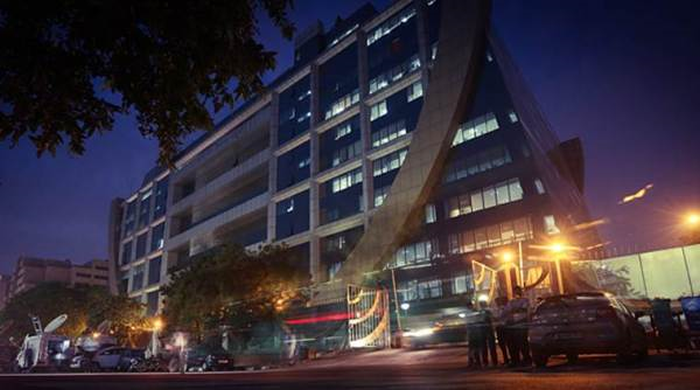By: Ritu Sarin
How many lows can a reporter with a long-ish career in journalism map of a single government agency, which she has tracked for almost two decades? In the case of the Central Bureau of Investigation (CBI), there have been lows and lows, with brief interludes of relative quiet thanks to court intervention or a low-profile incumbent as chief. What we are now witnessing is certainly a new low in the reputation of the agency and as we wait for the Supreme Court to opine on the legality of the forced leave orders given to ousted director, Alok Verma, and for the Delhi High Court to decide the fate of the FIR slapped against his special director, Rakesh Asthana, one can only wonder: Can the CBI sink to a lower low?
Perhaps it can. What is important in the current vitiated environment is not the merit in the allegations made by the CBI’s No 1 and No 2 in complaints against one another, but the fact that the government has created a poisonous situation and allowed it to fester long enough.
That every political dispensation has been using the CBI is a given and revelations on this government’s modus operandi have come directly from Verma in his plea before the Supreme Court. He has stated that not all influence exerted by the political class is found “explicitly or in writing”. He goes on to say that, “More often than not, it is tacit, and requires considerable courage to withstand.” To what extent Verma will elaborate upon this before the apex court will surely influence the outcome of the crucial case.
Over the weekend, in the run-up to the astounding late-night developments inside the CBI headquarters, a key government official asked me, “How was it in the past?” Never so bad, I said. In 2009, I had chronicled the politicisation of the CBI in a series of reports in this paper, based in each case on internal file notings. The series began with the clean chit given by the CBI to Jagdish Tytler in the 1984 riots and and went on to describe the blatant manipulation of the Disproportionate Asset (DA) cases against former Uttar Pradesh chief ministers, Mulayam Singh Yadav and Mayawati.
The pressure on the agency, specially in the handling of the Taj Heritage Corridor case, in which the BSP supremo was implicated, continued even after the NDA government came back to power in 1999. It is well known that relations between the then CBI chief, U S Mishra, and the PMO under Principal Secretary Brajesh Mishra, were strained due to the Mayawati probe. Mishra’s tenure straddled two governments and as has been reported earlier, when the Congress came back to power in 2004, the CBI chief was required to put down in writing why his agency had not challenged the discharge of L K Advani in the Babri Masjid demolition case by a Rae Bareilly court in 2003.
Then, of course, there were even more flagrant twists and turns in the Bofors bribery case, wherein the actions of the CBI, such as filing appeal against discharge in courts, were clearly influenced by the political colour of the ruling dispensation. Even as The Indian Express expose of the CBI was rolling out, my colleague, Amitav Ranjan, reported on how the Look Out Circular (LoC) against Italian middleman, Ottavio Quattrocchi, was withdrawn on the basis of an opinion given by the then Attorney General, Milon Banerjee.
This perfectly fitted into the pattern that emerged of the CBI’s handling of politically-sensitive cases — that, on file, decisions were based on opinions of either the government’s law officers or by the CBI’s own Director of Prosecution. But in the Babri Masjid demolition case, apparently, even the government’s law officers recused themselves and the CBI conveniently based its decision — of not filing an appeal — on an opinion sought from a private lawyer, N Natarajan.
Hereafter, the controversies surrounding the agency and its bosses were mostly of their own making. With the UPA government embroiled, first, in the 2G scam and later in the coal allocation scam, it was an open secret that successive CBI chiefs and the government’s troubleshooters were often in a huddle trying to control the fallout. Ranjit Sinha, who joined the CBI in end 2012, even left behind a draft copy of the CBI’s status report on the coal scam for “vetting” by Law Minister Ashwani Kumar and his staff before it went to the Supreme Court.
The “vetting” was first reported by The Indian Express and eventually the law minister had to step down thanks to the unsavoury episode.
After the coal fiasco, the Supreme Court bench headed by Justice R M Lodha famously said, “It is a sordid saga… The CBI has become a caged parrot speaking in its master’s voice.” As it turned out, just months after this episode, in September 2014, the logbooks maintained by the security detail posted at Ranjit Sinha’s residence were outed. They revealed that among the frequent visitors to Sinha’s house were persons accused in the 2G and coal scams. And among those who visited the official residence of the CBI director over 70 times between 2013-2014 was meat exporter Moin Qureshi, the leakage of whose BBM messages with Sinha’s predecessor, A P Singh, cost the latter his post-retirement assignment as a member of the UPSC.
Notably, the current unprecedented crisis of credibility of the CBI has come in a tenure when the agency is, in comparison to previous terms, handling relatively smaller matters of political significance. Through Asthana, the government chose to plant a line parallel to that of the director and did not change its stance when the signaling was clear and when Verma first opposed his promotion and then complained to the Central Vigilance Commission about the special director representing him at a key meeting. That was in July this year, and since then, the faultlines in the premier investigating agency have been getting exposed with every passing day.
Ironically, the wheel appears to have come full circle with the same Moin Qureshi case back in the news and free-floating documents revealing that one Hyderabad-based businessman named Sathish Babu Sana has been allegedly paying off middlemen to reach successive CBI directors since the past six years. And, in what surely is a record low, both Verma and Asthana have now complained to the government that the same businessman has paid bribes to the other.
Courtesy Indian Express






